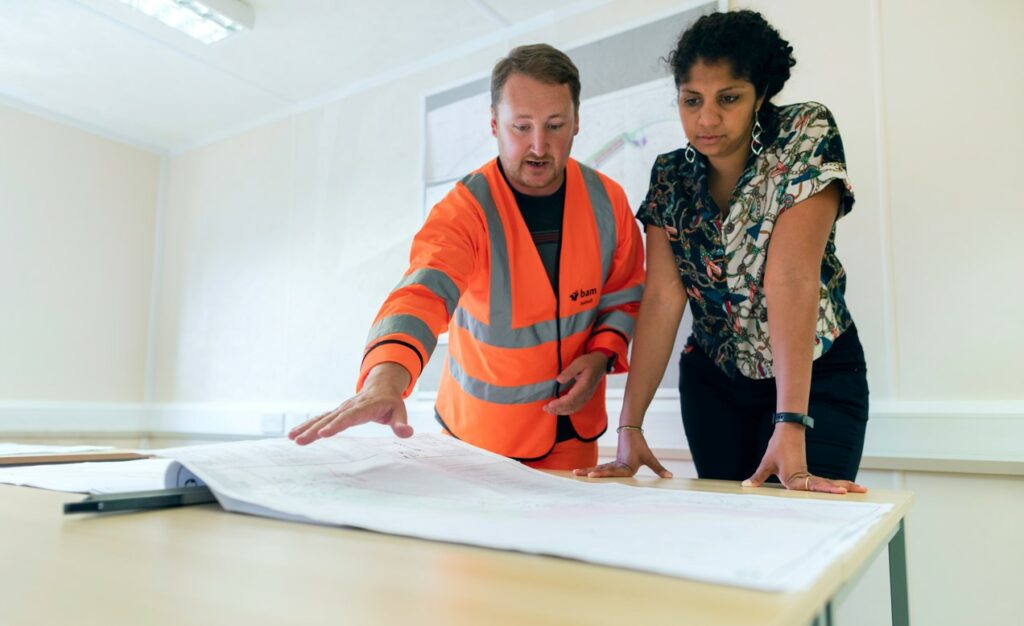
Getting Canada Back on Track after COVID-19 with a Comprehensive Innovation Plan
By Navdeep Bains and John Knubley
(Navdeep Bains previously served as the minister of Innovation, Science and Industry Canada and is now Vice Chair of Global Investment Banking, CIBC; John Knubley was the deputy minister and is now a consultant.)
During the first two mandates of the Liberal government, it was our job — and honour — to develop and implement Canada’s Innovation and Skills Plan (“the Plan”) at the department of Innovation, Science and Industry. While work has continued on the Plan since our respective departures from government, COVID-19 has taken the country in unexpected directions and diverted attention from the broad innovation agenda.
If Canada is to solve such complex issues as climate change, supply chain resiliency and the digital economy, it must refresh, rebuild and play the long game for innovation.
A nation impatient for solutions is primed to get back to the job of building a comprehensive innovation plan that will create the winning economic conditions for a generation to come.
Having been entrusted directly with crafting such a plan over a five-year span, we offer our lessons and insights to the cohort of policymakers now responsible for the post-pandemic innovation reset. What drove us? What worked and what did not? What surprised us? How should this all play out now?
On the day of the swearing in of cabinet in the Fall of 2015, as minister and deputy minister we were charged with jointly holding the rather heavy Great Seal of Canada. We nearly dropped it. Nobody else knew although we were heard laughing. The next day, we met one-on-one for the first time in the C.D. Howe Building in downtown Ottawa. We found common ground immediately in our determination to overcome our inauspicious opening act.
A large portrait of C.D. Howe, the post-war “Minister of Everything”, stares down on the mere mortals who enter the minister’s office on the building’s top floor. It fills you with humility and inevitably leaves you thinking: “Such big shoes to fill. We better get some things done!”
In the shadow of the gaze of one of Canada’s greatest policy innovators, we spoke for two hours about what we wanted to achieve in our time together. We met again the next day for another two hours. We observed how Canada’s richness in scientific talent needed support and reinforcement to achieve the full potential of its practitioners and, through them, of the country. We talked about how often Canada falls short in taking breakthrough ideas from the lab to the marketplace and the priorities we felt would constitute an ambitious agenda of commercial success. We committed to avoid short-term band-aids and to lead, as C.D. Howe did after World War II, through long-term thinking that could make a genuine difference for Canadian jobs and living standards. How could Canada become a respected, global innovation leader emulated around the world? How could we build the scale and scope of Canadian businesses, especially those on the cutting edge of enabling technologies? How could we create the conditions for a confident and ambitious Canadian culture of innovation since we knew that was what it would take?
The goal of achieving sustained growth and living standards was the main driver for the Plan. The challenges are well documented in the reports of Finance Minister Bill Morneau’s Advisory Council on Economic Growth. Canada’s rate of growth had been stagnant, falling decade-over-decade for the past 50 years. While growth rates have reached higher levels in the COVID interregnum, the fact remains that the average annual GDP growth per decade between 1960 and 2000 was about 4 percent; since then, it has averaged about 2 percent. Other peer developed countries have experienced similar declines, but Canada has fared worse than most in the G20.
A legacy of troubling underlying issues in Canada’s innovation performance also existed — and still remains — as challenges to be overcome. These include poor productivity growth, low business investment in R&D, anemic commercialization, poor rates of technological adoption and a recent run of underinvestment in science, technology and talent.
The Plan took a comprehensive, integrated approach to addressing these issues in large part because Canada’s innovation performance showed the country falling in ranking in areas of both strength and weakness. This was attributed sometimes to other developed countries investing relatively more in innovation and catching up to Canada.
Our biggest motivator, as we began to understand the breadth of the challenge, was how consequential it was for individual Canadians. Living standards would fall unless our policies would help bump up the growth rate to at least 3 percent a year on average. One percent was a huge difference, worth an extra $17 billion to spread around in the first year and ever greater amounts in every year after that. Such a sustained boost in growth required new approaches and ambition. It could not be business as usual. Despite some stimulus-led growth last year, these same long-term challenges face us today. The uncertainties of COVID-19 render the necessity of long-term growth and innovation all the more urgent.

Designing an innovation agenda
In 2015, the Government of Canada launched a process to reform its innovation and science programming. A broad range of consultations with CEOs and stakeholders took place with the aim of reaching beyond traditional players. These inclusive consultations continued throughout the first two mandates of the federal government as each element of the Innovation and Skills Plan was launched and put in place.
We believe these types of broad consultations facilitating collaboration among governments, businesses and civil society are required again. The spirit of partnership created by the pressures of COVID-19, especially in the area of health science, can only help people to think like a team. Some, including analysts at the OECD, talk about the emergence of “co-creation” in pandemic times where parties came together to find solutions rapidly, such as vaccines. What we certainly learned in our work is that successful innovation policies are usually ones where all the players share common objectives and each takes some accountability for action. This type of partnering sets the conditions for ecosystem success.
The Plan’s four pillars remain foundational today for building a global leading, comprehensive Canadian innovation plan:
- People and Skills;
- Building Science and Technologies;
- Growing Companies; and
- Program Simplification.
These were designed as integrated and mutually reinforcing pillars, supporting innovation in all its dimensions and addressing gaps along the so-called innovation continuum. Each pillar featured signature initiatives including a Global Skills Strategy, Superclusters, the Strategic Initiatives Fund, an Intellectual Property (IP) Strategy, a Digital Charter, a Venture Capital Catalyst Initiative, six CEO-led sector-specific Economic Strategy Tables, new procurement programming and the creation of an innovation hub for programming.
Some of the most vital policy dimensions of the past Plan are, if anything, more important than ever:
- TALENT
First, all the programming recognized in its formation the extraordinary importance of people. Without the right talent, a country cannot be a global leader in innovation. We had the advantage of Minister Bains’ experience as a son of immigrants. Immigrants, already risk-takers by definition, carry a mindset of ambition and a deep-rooted obligation to leverage the opportunity Canada has provided.
We designed various programs to hold Canadian talent in place and to attract even more from far and wide, with inclusion not just a fundamental principle of fairness but one serving growth, too. The special investments by the Government of Canada in attracting those with artificial intelligence (AI) and quantum knowledge speak to our orientation, as does the Global Skills Strategy by fast tracking highly skilled immigrants into high tech jobs, up-skilling programs for small and medium-sized enterprises (SMEs) and coding initiatives for kids.
The talent war is never over. Canadian employers have benefitted from newcomers seeking an open society and discouraged by President Trump. That window may or may not be closing, but policies to create competitive advantage through diversity and quality of life must continuously be revisited. The pandemic has also placed an ever greater premium on digitalization, making the quest for talent and agility all the more pressing.
- BUSINESS-LED PROGRAMMING
We looked to create new, business-led programming requiring matching business investment. Our aim was to encourage more effective commercialization and address chronic underinvestment by business in R&D. This was the thinking behind the Venture Capital Catalyst and Supercluster initiatives, for example. Creation of the Strategic Innovation Fund made government a partner to firms in all sectors in de-risking large private-sector R&D investments.
This type of business-led, demand-side programming was intended to complement the wide range of innovation programming on the supply side originally launched in the 1990s by John Manley and Kevin Lynch in their successful run as minister and deputy. Their earlier programming supported R&D in universities and colleges through public-sector funding agencies such as the Canada Foundation for Innovation, the Canadian Institutes of Health Research, the Natural Sciences and Engineering Research Council and the Social Sciences and Humanities Research Council.
Despite all this, innovation measures continue to show that Canada lags in commercialization and innovation outputs. We need to continue to plug away at finding winning applications of ideas in Canada. The pandemic also reinforced the need for sustained Canadian government investment in science and the consequences of failing to do so. Getting the right balance in programming between these two sides of the equation is critical for success.
- ECOSYSTEMS
Ecosystem thinking pervaded all the programming, especially the Superclusters program. One-off investments rarely fix Canada’s long-term innovation weaknesses. Rather, an integrated systems type approach is necessary to find and address gaps in what Canadians and their firms do to create innovation. These gaps include underinvestment in R&D and lack of large scale projects as well as poor returns relative to peers in collaboration (19th) and density of networks (16th). Another important systems issue concerned how to better support successful start-ups over time and promote the development of larger Canadian firms. Canada lags other countries in its record of scaling firms, often losing these firms to buyouts from the United States.
- PROGRAM SIMPLIFICATION AND INCLUSION
We hoped to rebuild innovation programming in a way that simplified and made more inclusive the interfaces between governments and businesses. This involved reducing and consolidating the number of programs by two-thirds and establishing an Innovation Sector in the department to serve as a hub for all innovation programming across the Government of Canada and beyond. The hub was based on a portfolio delivery model starting with the department and various government agencies (e.g., National Research Council; Regional Development Agencies, RDAs) working through private-sector boards (e.g., Superclusters), and finally through the Business Development Bank of Canada (BDC), Export Development Corporation and Venture Capital Catalyst Initiative. During the pandemic, this portfolio model of joining up different departments, agencies and organizations proved invaluable as government sought to mobilize an industrial response. Canada now needs to return the application of this portfolio approach to the long-term growth of the innovation economy. Simplification and consolidation are also areas that require reopening the dialogue and action, including reviewing regulations. COVID-19 has shown how quickly and effectively the country can move on regulations if the will and need are there.
On inclusion, there is always more work to do. The Innovation and Skills Plan focused on girls and youth in its coding programs; promoted initiatives supporting women and Indigenous entrepreneurship, including venture capital funds; and launched a 50-30 challenge co-created by the federal government, private sector and civil society to address under-representation of equity-seeking groups on boards of directors. In all aspects of programming, we looked to support innovation leaders who had not always been present at the table, including black entrepreneurs.
Associated with all four policy dimensions were program elements encouraging experimentation. This involved using tools such as grand challenges and missions (e.g., President John F. Kennedy’s moonshot). These aspects set the stage for the call today for a Canadian Advanced Disruptive Agency, which would build on U.S. practices and aim to solve big societal missions related to climate change.

Where are we now: Lessons learned
While there are, as always, critics of any federal innovation plan, we believe the comprehensive plan we introduced over five years serves as a foundational platform on which to build back better. Some recent measures of innovation indicate that Canada is moving in the right direction. The Conference Board Innovation Index traditionally has given Canada a “D” in innovation. In 2021, it upgraded the country’s ranking by two places among 16 peer countries to 11th place, as Japan and Australia fell. Canada also ranked second in 2021, only behind the United States, in the Global Cleantech Innovation Index, steadily rising from seventh in 2014 and fourth in 2017. Such measures can never be definitive, but any caution should be accompanied by at least a small dose of optimism.
Pandemic management and the associated shutdowns of the economy have altered the course of the Innovation and Skills Plan. The department pivoted successfully and appropriately to support domestic production of personal protective equipment, ventilators, testing, traceability and vaccine development. Adoption of digital practices and e-commerce skipped a beat, taking us further at this point than ever anticipated. Programming also shifted to address business survival and liquidity, especially in the tourism and the airline sectors, through the RDAs and BDC as well as through the support of the Strategic Innovation Fund. This program has also been used to try to gain a foothold in electric vehicles and batteries in the auto sector. Subsequently, the Net Zero Accelerator initiative has been added to the Strategic Innovation Fund’s arsenal, promoting large projects with significant benefits in emission reductions for Canada to help directly meet its climate change targets. We salute the incredible contribution of our successors, Francois-Philippe Champagne and Simon Kennedy.
While it is still early for comprehensive evaluations of the programming of the Innovation and Skills Plan, especially when interrupted by COVID, here are several of our preliminary takeaways. In our view, progress, though insufficient so far for the challenge at hand, was made in two areas:
- Capital investment and venture capital (VC): Canada ranks third in the OECD for VC investment. In 2021 a record of $15 billion was set for total VC invested in Canadian start-ups. BDC played a leading role in support through its so-called new “fund of funds” under the Venture Capital Catalyst Initiative. This commitment to growing VC remains a priority, especially as government winds down COVID-19 supports. A stronger role for Canadian private equity in innovation also emerges as an issue as VC funds grow, especially for clean tech companies whose lack of scale and high-risk profile make private equity scarce.
- Scaling-up of firms: First the good news. Since 2017, 15 new unicorns have been established in Canada across a wide range of sectors beyond information technology. The list includes Shopify, Lightspeed, Go Easy, Clearco, Dapper Labs, Benevity and Wealthsimple. A recent report from the National Angel Capital Association, based on the Narwhal Project, indicates at least another 51 Canadian companies on track to achieve unicorn status. The economic drivers behind the emergence of these unicorns are not easy to discern. The Plan clearly helped in creating a business environment where top tier talent was more plentiful. The Accelerated Growth Service also had all federal departments pitching in to provide one-stop-shop valet services and program support for pre-determined high-growth firms. Their selection was based on evidence of three years of sustained high revenue growth and creation of jobs. This special attention to the needs of high-growth firms had mixed results, but merits continued refinement.
In both these areas, the record of success suggests the need to double down and have policymakers do even more to support what is happening here.

Superclusters revisited
The Superclusters program, a signature initiative of the Plan, has drawn more than its fair share of criticism and skepticism. Our view remains steadfast. We believe that creating clusters of technology creation and development is a long-term game.
We were surprised by the impatience of critics and their misunderstanding of the program’s goals. Within just a year, the Parliamentary Budget Office suggested failure because the projects were too slow to be announced and started. Some large companies were also upset because R&D projects in their business plans were not immediately funded. Both missed the point: Superclusters are about the curation of new networks as much as new projects. Approved projects must be based on strategies for co-funded technology consortia to strengthen supply chains and innovation activity among anchor firms and SMEs in Canada. This takes time.
On the positive side, we were also surprised through the first years of the program at how many businesspeople said to us, “I can’t believe we never talked to each other before.” This is especially encouraging because, despite the evidence suggesting otherwise, Canadians too often believe that they are naturals at networking and collaboration. In truth, a stronger culture and formal structures are needed to turn casual encounters into interactive ecosystems, and to do so at scale.
Another revelation was the expectation of critics that the five Superclusters — in digital, protein development, advanced manufacturing, AI and ocean technologies — would somehow evolve at the same pace. We remember when we launched the program, looking at each other and saying: “These will evolve at their own speed given the different business leadership and areas of focus.” If only two were truly successful, we felt, and still feel, that would constitute a big win.
To date, we see four areas of demonstrable promise with the five Superclusters:
- Increased business investment, where business is exceeding its matching funding requirements: for every government $1, business is investing $1.40;
- New partnerships around the five cluster areas with over 7,000 members;
- New support for talent and training across the country in these technology areas; and
- New international partnerships, e.g., there is a cooperation agreement with the European Union on Superclusters; the Digital Supercluster has engaged India on clean technology; the Ocean Supercluster has pursued various partnerships with Norway.
More certainly remains to be done to build the scale and scope of the Superclusters. We need larger, transformative projects. For example, the Protein Supercluster’s $19 million investment in Merit Foods in Manitoba led to a partnership with Nestlé that is delivering more value-added production in agriculture, a traditional weakness for Canada. The $19 million Ocean Vision Project, led by Kraken Robotics of St. John’s, provides underwater, high-resolution images of the sea floor to a variety of ocean industries, securing improved safety and efficiency of ocean operations.
One thing is certain. Strong clusters contribute disproportionately to sustained GDP growth and more jobs in any country. We only need to look to the examples of Silicon Valley, Boston, Eindhoven and Singapore to confirm this.

Coming up short
We believe the Innovation and Skills Plan fell short in two areas:
- Procurement
New procurement programming, Innovative Solutions, has made modest progress with just over 100 grand challenge procurements from the top 10 federal departments, yet the approach remains under development and complex. Small business procurement programming transferred to the department is in high demand, but it came without funding. Defence procurements (and associated industrial benefits) are large but remain slow and cumbersome. Firms that have benefitted from these programs value them highly and the federal buy helps them in export markets. Yet, the federal government could be so much more effective with its procurement spending as the practices of other countries demonstrate.
- Alignment
The Plan included a number of initiatives to reduce instances where either a federal department or a government did one thing only to be undermined or duplicated by another. Committees were struck within the federal government and with other governments to promote alignment, including re-establishing a federal-provincial-territorial Ministers of Innovation table, which had not met in 12 years.
Much more work needs to be done on alignment within the federal government, including streamlining regulations, and, if anything, things have sometimes gone backwards with a return to silos. The RDAs are a case in point. Each region undoubtedly has some unique traits in terms of innovation and business development. Yet, it is hard to believe that each agency would not benefit from sharing best practices and aligning approaches around such national priorities as digital technology and technology adoption by SMEs, or around start-ups and incubators, as was originally envisaged in the Plan.
Moreover, alignment between and among Canadian governments remains a constant challenge. The symbol of this type of “alignment failure” is without doubt internal trade barriers. Progress was made under the Plan to improve the Canadian Free Trade Agreement in line with the Comprehensive Economic and Trade Agreement between Canada and the European Union, and specifically in transparency of barriers. The fact remains that Canada’s internal trade barriers remain an unacceptable drag on GDP growth.
These alignment issues raise questions about the status and nature of Canada’s culture of innovation. While as minister and deputy minister we witnessed many examples of great Canadian ideas and innovative practices, we also saw the shortcomings, notably:
- The inability of actors to look beyond their silos to focus on common goals; and
- A lack of scale because of a preference or desire to spread support and initiatives like peanut butter across the country.

The need to de-risk business investment in innovation
As Canada moves past COVID-19 and towards a new approach to the economy and society, the twists and turns of the last two years will inform how we move forward. But it also raises the question of how to leverage advantage from the past Innovation and Skills Plan.
Two things are crucial. Canada must reinvigorate its innovation policy and make it comprehensive beyond just the health sector, and it must use government expenditures on innovation to offset business investment shortcomings.
The issue of government de-risking innovation and technology investments for the private sector lies at the heart of any future plan. Canada needs to address falling and low business investment as its number one priority. The Strategic Innovation Fund (SIF), which has become the ever-growing-in-size, go-to tool for the federal government to promote strategic investment and compete globally for investment dollars, offers some lessons.
The SIF was created in 2017 to move beyond an almost exclusive government presence in the aerospace and auto sectors. It was made available to all sectors in recognition of how new enabling technologies could be applied to all areas. It remains imperative to continue this focus on de-risking R&D costs for companies in all sectors given how disruptive new technologies can be applied with benefits in the primary, manufacturing and service sectors.
As of December 2021, the SIF had announced 100 projects with government contributing $5.2 billion to total project costs of almost $54 billion. In other words, for every $1 invested by government, $10 has come from project proponents. Of the projects supported, 92 projects were for R&D, firm expansion and/or investment attraction while 8 projects were aimed at collaborative technology development and ecosystems. Projects encompass a wide range of sectors, including autos, aerospace, biotechnology, pharmaceuticals, advanced manufacturing, robotics, IT, space/satellites, 5G, clean technology, steel, aluminum, mining, petrochemicals, pipelines, nuclear and agriculture/food. The SIF has also served as the source of special support for three AI institutes and various quantum initiatives.
During COVID-19, partly to support the innovation requirements of the pandemic, especially in the health sector, the government topped up the SIF budget by $8 billion and introduced an $8 billion Net Zero Accelerator initiative to sponsor projects by major emitters. The aim of the latter is to help Canada meet its international climate change targets and innovate its way through the energy transition. Moving forward, how the federal government effectively and strategically invests this $16 billion is perhaps THE key element of any comprehensive innovation plan.
As former managers of the SIF, we have been surprised by how little discussion there has been about Canada’s strategic technology interests in SIF assessments. Instead, each project (and announcement) is taken on its own, with critics focusing on the value of each rather than the total value of the portfolio. Canada’s political culture favours showcasing individual announcements. In hindsight, we are at fault for not having better explained the strategic aspects and goals of the SIF to Canadians. The SIF has encouraged greener, larger and more IP-intensive projects. It is about building niche areas of global technology leadership across a wide spectrum of economic activity. Moving forward, the country badly needs a broader dialogue and debate about its strategic innovation and technology interests. A SIF annual report could help generate this dialogue and a better understanding of the program.
We have also been disappointed by the lack of attention given to the projects as clear demonstration of Canadian technology leadership in niche areas. For example:
- $22 million investment in a $138 million project for Stemcell Technologies in British Columbia in 2018. The project scales manufacturing of stem cell clinical trial materials. Canada is a world leader in this domain and the firm is one of Canada’s largest biotechnology firms.
- $34 million investment in a $74 million project of Attabotics in Alberta in 2020. This allowed the company to expand its operations and bring to market its one-of-a-kind AI-driven robotics warehouse technology.
- $295 million investment (matched by Ontario) to have Ford Canada invest $1.84 billion to make five models of electric vehicles in Oakville by 2025. This investment demonstrates Canada’s leadership and capacity in electric vehicle production and its ability to attract large foreign investment.
Setting priorities after COVID-19
With the SIF as a major tool to de-risk private investment, we see three priorities for a renewed comprehensive innovation plan for 2022 and beyond. Originally part of the earlier Innovation and Skills Plan, these three are emerging now as even higher priorities as Canada moves beyond COVID-19.
- CLIMATE CHANGE
Innovation is key to success in meeting the challenges and targets of net zero and climate change. The transition will not happen without innovation and Canada will lose competitive advantage without greater ambition.
Innovation in clean technologies will be a big part of commercializing wind, solar, electric vehicles, batteries, hydrothermal, hydrogen, small modular nuclear reactors, and carbon capture and storage. This is a formidable list challenging all countries to innovate in new ways. Additionally, as an exporting nation and supplier of fossil fuels to the world, Canada needs to innovate to decarbonize these, with carbon capture playing a significant but not solo role.
The promotion of Canadian clean technologies has progressed well, as seen in the country’s impressive global rankings of leading firms. Investments from Sustainable Development Technology Canada have helped. Several SIF projects have also played a significant role: for example, the $25 million investment in a Carbon Engineering $114 million project in British Columbia to advance its technology to extract carbon directly from the air; or, the $35.7 million investment by Siemens Canada to research and develop smart grid technologies in partnership with New Brunswick and Nova Scotia Power.
The new Net Zero Accelerator for major emitters may be the way of the future. It is no longer enough for government to simply support R&D; rather, it must be a force for “climate tech” leadership. While many new projects for major emitters are now in the SIF pipeline, we believe that more profile should be given to the Elysis project in Quebec, which included a $60 million government investment as part of a $558 million project. This joint venture partnership between Alcoa and Rio Tinto, with the participation of Apple, is now headquartered in Quebec. The joint venture allowed the transfer of IP from the United States to Canada to develop and refine the world’s first carbon-free aluminum smelting process. Apple has already received a first shipment of Elysis’ unique aluminum.
- SUPPLY CHAIN RESILIENCY
The Innovation and Skills Plan had elements of supply chain resiliency embedded in it. For example, building new supply chain relationships in Canada was one of the goals of the Superclusters program. The pandemic has created even greater urgency around the need for stronger, domestic supply chains. It has brought to the fore serious shortcomings, especially in the health and food sectors. We would speculate that public awareness of the importance of supply chains is at an all-time high, at least in peacetime.
Moreover, heightened geopolitical competition between the United States and China has raised the bar on supply chain issues relating to national security in areas such as critical minerals and silicon chips. Pressures are building to decouple the regulation and management of technologies — and their associated supply chains. Canada and other democracies will be increasingly asked to align with the United States. At the same time, Canada will need to keep its own innovation interests focused in niche areas such as AI, quantum, stem cells and clean technology, among others. And that may lead to a unique path for Canada.
While the SIF has announced several projects supporting supply chain resiliency, more initiatives are needed in the health and food sectors as well as others. For critical minerals, a policy is under development from a national security perspective. It will also be important, however, to examine and support projects through the prism of value-added processing of critical minerals in Canada.
- DIGITAL ECONOMY
More effective regulatory and competition policies for large technology companies are key priorities for the next iteration of a comprehensive innovation plan. Government and business need to find more ways to ensure that new digital technologies and infrastructure benefit all and lead to fair and transparent practices. What we learned in office is that securing the trust of Canadians is key. The Innovation and Skills Plan introduced initiatives in many aspects beyond regulation that now require further development. The Plan created new policies for the application of IP, big data and analytics, and the development of 5G/6G as a broad enabling technology. Advanced manufacturing will benefit from 5G as part of the evolution to Industry 4.0, as will sectors such as agriculture, mining, oil & gas and forestry in terms of efficiency and innovative sustainable practices.
The Plan involved new and comprehensive national broadband infrastructure, committing the government to a national service goal of 50/10 mph in all parts of the country by 2030 (98 percent of Canada by 2026). To date, $7.2 billion of programming has been announced. To support 5G, a SIF program called ENCQOR was launched. This Canada-Quebec-Ontario partnership sponsors 5G pre-commercial business applications with the aim of creating leading global Canadian firms. Programs also were designed to address the digital divide between high- and low-income families. The goalposts continue to move and so must policy.

Putting in place a comprehensive innovation plan
Demands on Canada’s economy and society from a shock such as COVID-19 require major undertakings, many building on existing policy and some on new approaches.
We are confident that Canada can thrive by establishing a renewed comprehensive innovation plan suffused with ambition. We believe that it should be built on the foundations of the past Innovation and Skills Plan, apply the lessons set out in this paper, and focus on the three priorities of climate change, supply chain resiliency and the digital economy.
As minister and deputy constantly under C.D. Howe’s watchful gaze, we drew lessons from his legacy and counsel others to do the same. His portrait should never be removed. It reminds us of the importance of good policy and the broad social and economic impacts of policy excellence. The level of ambition must be high, as it was in the post-war era.
We will need to step up together to ensure that Canada is true to Howe’s vision of a prosperous nation of innovators and to more contemporary thinking that no one should be left behind. A successful economy must include all. It will take a long-term view coupled with a sense of urgency. The world demands both if we are to produce sustained and sustainable growth.
Building a strong culture of innovation, as after World War II, is a necessary and immediate condition of a growing standard of living and successful society. It starts with its people and talent. It leans heavily on science. It involves co-creation where governments, businesses and civil society work together to find solutions. All share common objectives with each player assuming accountability for action and alignment so that Canada can punch above its weight in innovation and technology — the key drivers of a modern economy.
Building a comprehensive innovation plan requires patience and willingness to learn from and build on what came before.
We have set out in some detail the lessons we gleaned as architects of the earlier Innovation and Skills Plan. Double down on supporting the successes of VC and scaling-up unicorns. Build clusters and networks of innovation across the country. Do significantly better on procurement practices and on securing alignment and coherence. Stop spreading peanut butter; instead, commit to focus and scale. The priority for the federal government remains to de-risk business investment in R&D and innovation, which is chronically low in Canada, especially relative to other countries. We should know by now that this will not turn around without partnership.
We wish our successors, and indeed all players in Canada’s innovation ecosystem, well and godspeed. As he stepped down from government in the 1950s, C.D. Howe said that those he left behind “must take on the job of re-organizing and building, and perhaps the sooner they get at it the better.” We could not agree more. Let’s all get to it!






